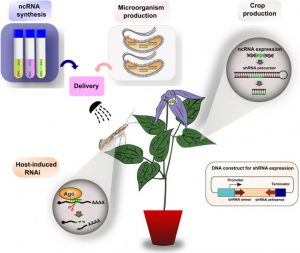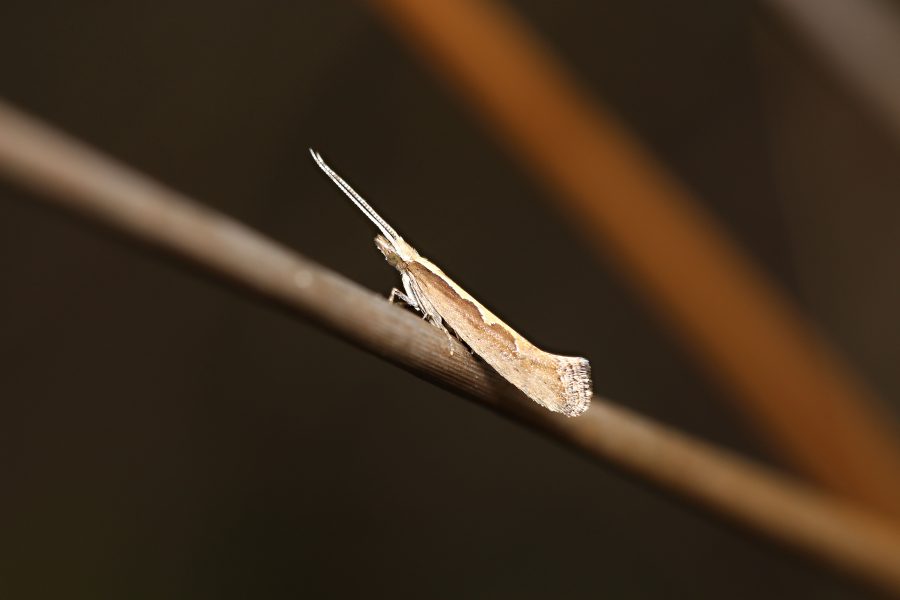Recently, high-throughput transcriptomics technologies have been critical for the identification of non-coding RNAs (ncRNAs), which are involved in many diverse biological processes. Moreover, it has shown that delivery of exogenous ncRNAs can be used to selectively inhibit gene expression by triggering RNA interference (RNAi).
The RNAi mechanism has revolutionized functional genomic research and has already demonstrated its potential as a valuable tool in pest management. RNAi-mediated knockdown represents an effective strategy to suppress the expression of target genes in insects, including diamondback moth, Plutella xylostella, one of the most important pests of cruciferous crops. Diamondback moths have acquired resistance to a wide range of synthetic compounds and is therefore considered a good model to study insecticide resistance.

RNA interference (RNAi) strategies for pest management.
In a WIREs RNA review, Luis María Vaschetto and Hernán Mario Beccacece provide an overview of the RNAi pathway in insects and its use in pest control, with special emphasis on the diamondback moth. The authors review and discuss recent studies where ncRNAs have been associated with developmental processes in diamondback moths and related species, and explain how this technology can be used in pest management.
By exploring the molecular basis of the RNAi pathway in insects, Vaschetto and Beccacece analyze genes of interest and metabolic signaling pathways that represent potential targets for the design of RNAi-based management strategies. Finally, the authors highlight the latest findings in the ncRNA field and genome engineering tools that it is expected will be used for the development of pest biocontrol methods.
Kindly contributed by the Authors.
Photo credit: Lucas Rubio

















